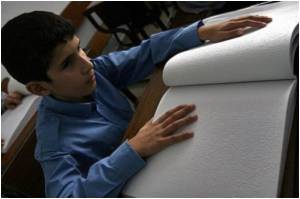Human augmentation blurs human-machine boundaries, restoring lost senses & creating new ones.
- Technology is getting better at helping us see, hear, and feel things in new and exciting ways
- Some techniques can let people who can't see or hear very well use different ways to experience the world. For example, they can translate pictures into tactile sensations on their tongue
- The integration of technology into human bodies raises ethical questions about accessibility, privacy, and potential misuse
From Aid to Augmentation: The Evolution of Technology and Human Senses
As technology advances, it no longer merely aids sensory perception but seeks to augment and even create entirely new senses. Scientists are doing research to make our senses better. They want to improve the things we can see and hear.They also aim to unlock new senses that are not naturally present in humans. For instance, there is a person who has a special implant that lets him see colors that regular people can't see. This shows how humans can become part machines, like cyborgs, by using technology to enhance themselves.
One notable development in this area is "sensory substitution," a technique that restores lost senses by using alternative sensory pathways. For example, imagine a special device called the BrainPort V100. The FDA approved it in 2015.
This amazing device helps blind people 'see' things using their tongues. It works by changing what they see into tiny electrical signals that they can feel on their tongue. Other devices, like Eagleman's VEST, enable hearing-impaired individuals to "hear" through touch, adding an entirely new sense to their perception (1✔ ✔Trusted Source
Human Enhancement: The Scientific and Ethical Dimensions of Striving for Perfection
Go to source).
Beyond substitution, technology has evolved to augment human perception. Initially, the VEST was created to enhance people's sensory experiences.
Unlocking the Sixth Sense: Exploring the Frontiers of Human Augmentation
Scientists like Kevin Warwick have been experimenting with special devices called neural implants and microchips.These devices are implantable inside the human body and can perform certain tasks that our natural body cannot do.
People worry that without proper protection, these devices could be misused to control or take away others' freedom to make their own choices.
In the past, people mainly created these devices to assist individuals with sensory issues. But now, people are using them to enhance and modify our bodies according to our personal preferences. So, it's essential for countries to collaborate and create fair rules for using these devices responsibly.
Though there are challenges and worries about human augmentation, many believe it can bring good things in the future. If we think carefully about ethics and use technology responsibly, it could make life better for everyone.
Reference:
- Human Enhancement: The Scientific and Ethical Dimensions of Striving for Perfection - (https://www.pewresearch.org/science/2016/07/26/human-enhancement-the-scientific-and-ethical-dimensions-of-striving-for-perfection/)
Source-Medindia












